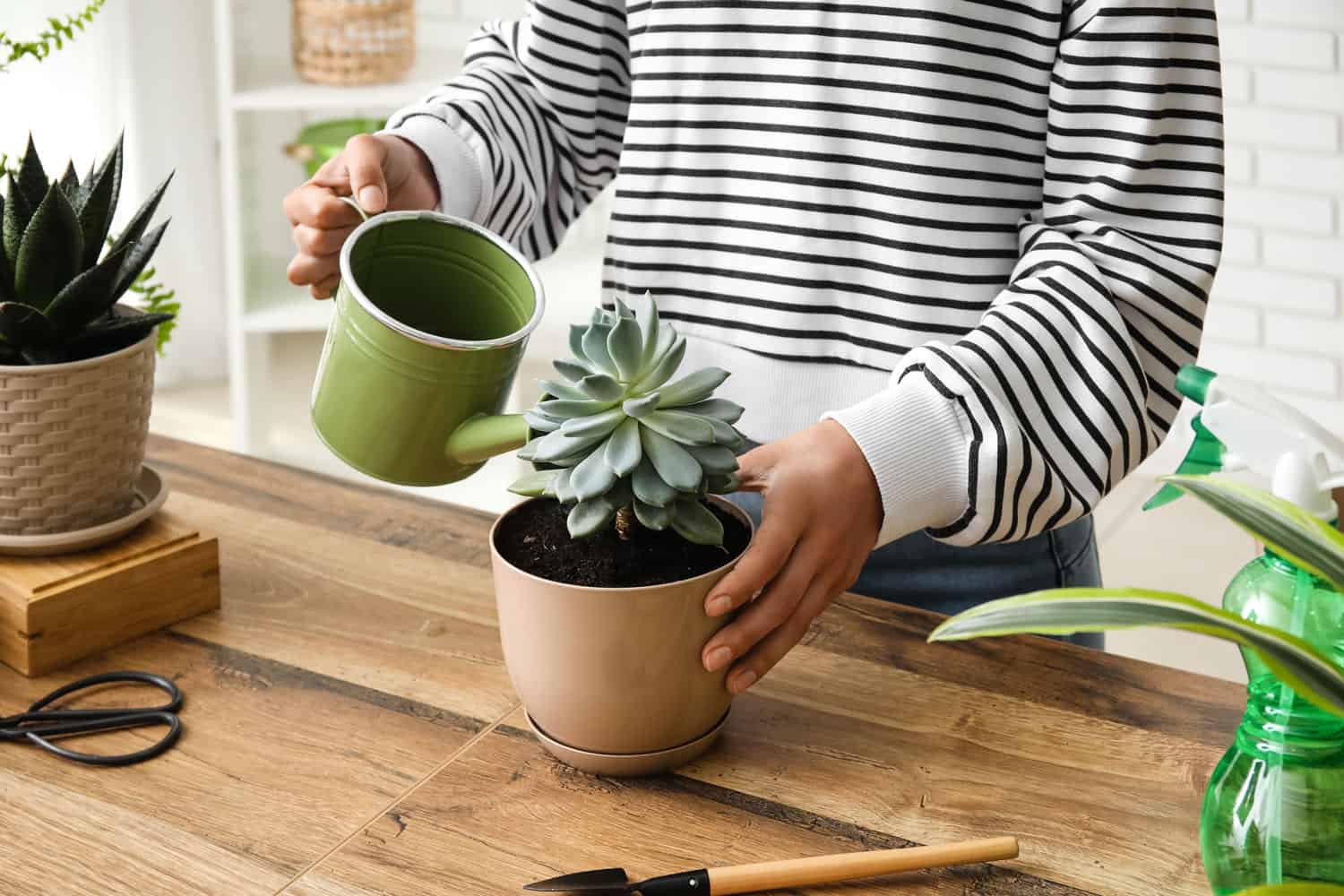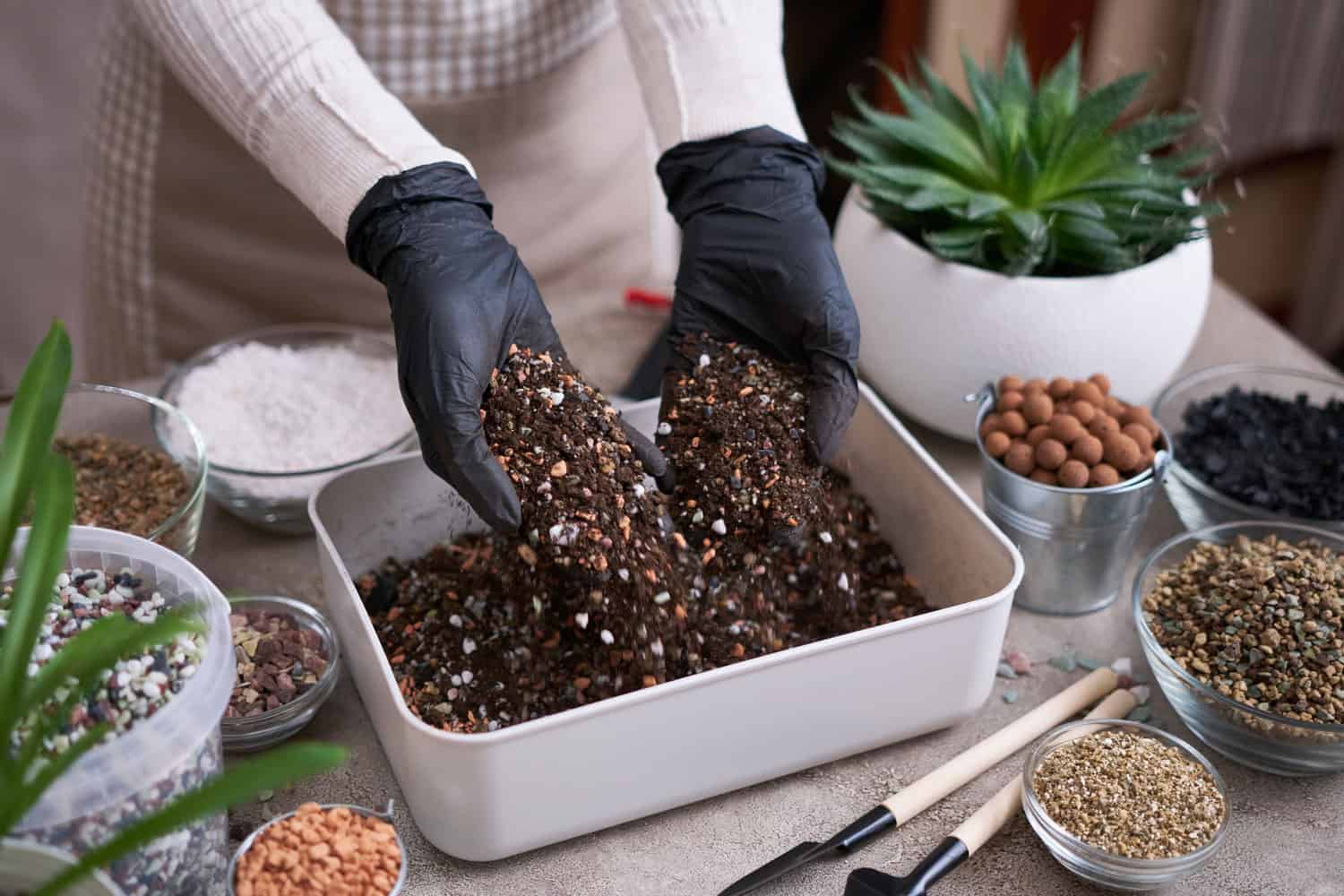Are you worried that your beloved succulents might not be getting all the love and nutrients they need?
Just like any other plant, they need the right balance of nutrients to stay healthy and vibrant.

Yellowing leaves, stunted growth, and a lackluster appearance can all signal that your succulent is craving some extra nourishment.
When your plants display any of the signs of nutrient deficiency, it's not too late to adjust your care routine and replenish what's missing from their nourishment.
Physical Signs of Nutrient Starvation
Despite their resilience and low-maintenance nature, succulents can still suffer from nutrient deficiencies. These deficiencies often manifest in various physical signs.

Here are five common signs that indicate your succulents might be starving for nutrients:
1. Discoloration and Yellowing Leaves
The vibrant greens of succulents can fade when they lack essential nutrients.
If you're noticing the leaves of your succulents changing color, especially turning a lighter shade or yellow, this can be a clear sign of nutrient deficiency.
Nitrogen deficiency, in particular, can cause chlorosis, where leaves lose their vibrant green hue. This nutrient is vital for photosynthesis and overall plant vigor.
Besides nitrogen deficiency, iron deficiency can also lead to yellowing leaves, especially in new growth.
Iron is essential for chlorophyll production and energy transfer within the plant.
To address this, consider using chelated iron supplements or adjusting the pH of your soil, as iron uptake is hindered in highly alkaline soils.
2. Weak or Stunted Growth
If your succulents aren't growing as expected or show signs of weakness, they may lack phosphorus which is critical for energy transfer and root development in plants.
Phosphorus deficiency can slow down growth and make plants more susceptible to diseases.
Using a fertilizer rich in phosphorus can stimulate healthy growth and resilience.
In addition to phosphorus, a lack of magnesium can also contribute to stunted growth.
Magnesium is a central component of the chlorophyll molecule and plays a pivotal role in photosynthesis.
Epsom salts, which are high in magnesium, can be a simple and effective remedy for magnesium deficiency.
3. Leaf Drop or Wilting
Healthy succulent leaves are plump and firm, so if leaves start to drop off or wilt, it could be a sign of potassium deficiency.
Potassium is critical for regulating water balance and maintaining strong cell walls. It also helps in nutrient uptake and resistance against diseases.
Ensuring a balanced nutrient intake, particularly with a focus on potassium, can help maintain the structural integrity and health of your succulents.
Additionally, overwatering or poor drainage can exacerbate nutrient deficiencies, leading to leaf drop or wilting.
Ensure your succulents are planted in well-draining soil and that pots have adequate drainage holes. This helps prevent root rot and ensures optimal nutrient uptake.
If you ever face the problem of root rot, here are 4 Steps to Save Your Succulents from Rot.
4. Poor Flower Production
If your succulents are struggling to produce flowers or the blooms are underwhelming, this can signal a deficiency.
Potassium and phosphorus are particularly crucial for flowering. These nutrients aid in bloom development and ensure vibrant, long-lasting flowers.
Consider using a bloom-boosting fertilizer to enhance your succulent's flowering potential.
Inadequate sunlight can also affect flowering. Succulents typically need bright, indirect light to produce flowers.
Consider the placement of your plants and ensure they receive sufficient light to complement nutrient intake for optimal flowering.
5. Brittle or Deformed Leaves
If the leaves of your succulents appear brittle, dry, or deformed, it could indicate a calcium deficiency.
Calcium is vital for cell wall structure and overall plant stability. It also plays a role in root and leaf development.
Deformed growth patterns or brittleness in leaves can be corrected with calcium-rich fertilizers or amendments like bone meal.
Fluctuations in temperature or humidity levels can also influence the uptake of calcium and other nutrients.
Providing a stable environment with consistent temperatures and moderate humidity can enhance nutrient absorption and prevent leaf deformities.
Correcting Nutrient Deficiency
To revive your nutrient-deficient succulents, it's crucial to choose the right fertilizer, adjust watering techniques, and modify its soil mix to help your succulents recover and thrive.
Choosing the Right Fertilizer
Your succulents need the proper balance of nutrients, which can often be restored with the right fertilizer.
Look for a succulent-specific fertilizer with balanced N-P-K values (nitrogen, phosphorus, and potassium) that cater to your plant's needs.
Apply according to the package instructions, typically during the growing season.
Try this slow release succulent plant food on Amazon.
Adjusting Watering Techniques
Over-watering or under-watering can both lead to nutrient uptake issues.
Ensure you're watering your succulents properly by allowing the soil to dry out between watering. This can prevent root rot, which hampers nutrient absorption.
Sometimes correcting improper watering strategies can resolve deficiency symptoms.
Modifying Soil Mix
A well-draining soil mix is vital for nutrient uptake. If your soil is too dense or retains too much moisture, consider adding components like perlite or coarse sand to improve drainage.
The right soil pH is also essential to make nutrients available to your plants.
Find more tips to help save your plants in this 10 Troubleshooting Tips for Succulents That Aren’t Thriving.
Nutrient Toxicity vs Nutrient Deficiency
It's important to determine whether they are suffering from nutrient toxicity or a nutrient deficiency, as each issue requires a different approach.
Nutrient Deficiency
- Leaves may appear yellow or pale
- Growth is often stunted and cannot grow to their full potential
- Thinner stem and fewer blooms
Nutrient Toxicity
- Too much of certain nutrients can cause toxicity
- Excess nutrients can lead to leaf burn, where the tips of the leaves become brown or discolored
- Signs of stress with unusually dark foliage or a crust of fertilizer on the soil surface
To bridge the gap between these two extremes, your plants need a balanced approach to fertilization. Cut back on fertilizer to prevent toxicity.
Final Thoughts
Healthy succulents should display perky, vibrant leaves and steady growth. If you notice any changes, it's time to evaluate their care routine.
Remember, succulents are resilient. With the proper attention and adjustments to their nutrition, you can restore their vitality and enjoy the diverse beauty they bring to your space.
Happy gardening!


